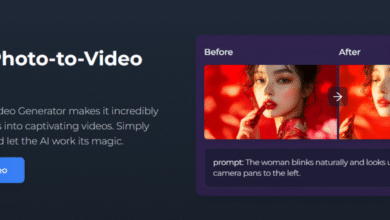AI Video Enhancement vs. Traditional Editing: Which Delivers Better Quality?

For years, video creators have relied on traditional editing techniques to craft high-quality content. Skilled editors could transform raw footage into cinematic pieces—provided they had hours to spare, access to powerful software, and years of technical expertise. But in the digital age, speed and efficiency are no longer luxuries—they’re requirements. This is where AI video enhancement steps into the spotlight, challenging the long-standing reign of manual editing.
The question now is simple but crucial: Which delivers better quality—traditional editing or AI-driven enhancement? The answer might surprise you.
The Old Guard: Traditional Editing’s Strengths and Shortcomings
Traditional editing has undeniable strengths. Professional editors bring a personal touch, nuanced judgment, and artistic interpretation to every cut, color correction, and effect. They understand the subtle emotional cues a video should deliver.
Editing manually can take hours, even days, for a single project. For creators producing content regularly, especially for platforms like YouTube, this delay can mean missed trends, lower audience engagement, and slower growth. Not to mention, hiring experienced editors or learning advanced tools like Adobe Premiere Pro can be expensive and overwhelming.
The New Challenger: AI Video Enhancement
Enter AI video enhancement—technology that can enhance video quality in ways that once seemed impossible without a studio. Instead of spending hours tweaking contrast, sharpness, and frame details, AI tools can instantly upscale resolution, fix lighting issues, reduce noise, and even restore old or low-quality clips.
The magic lies in machine learning algorithms trained on massive datasets of visual patterns. These algorithms “understand” what a high-quality image should look like, then reconstruct missing details with incredible precision. This means that even a shaky, poorly lit clip can be transformed into something polished enough to stand beside professionally shot footage.
Speed vs. Precision: A False Choice
One common misconception is that speed sacrifices quality. While this might have been true in early editing software, AI enhancement proves otherwise. With tools that can upscale videos to 4K in minutes, the gap between AI and traditional methods has narrowed dramatically.
For example, if you need to clip YouTube videos into short, shareable segments, an AI-powered clip generator can automatically identify highlight moments, trim them with frame-perfect accuracy, and maintain original quality. This kind of automation gives creators more time to focus on storytelling instead of technical fine-tuning.
The Human-AI Collaboration
It’s not a matter of AI replacing traditional editing altogether—it’s about merging the strengths of both. A skilled editor can still craft a unique visual style and make subjective creative decisions. But AI can handle the repetitive, time-consuming, and technically complex tasks, acting like a tireless assistant who never sleeps.
Imagine an editor who no longer needs to manually adjust brightness for every shot, because AI has already prepared a clean, high-quality base. This synergy results in faster turnaround times without sacrificing artistic control.
Which Should You Choose?
If you’re a content creator aiming for fast, consistent, and high-quality output, AI enhancement is a game-changer. It levels the playing field, allowing beginners to produce professional-looking videos without years of training. Meanwhile, for projects where artistic storytelling and subtle creative flourishes are essential, traditional editing still holds its ground.
The truth is—choosing between them is no longer necessary. The most successful creators today use AI to enhance video quality in minutes, then add a human touch through selective manual editing.
Summary
While traditional editing has a rich legacy, the future is undeniably leaning toward AI-powered workflows. The ability to quickly clip YouTube videos for multiple platforms, upscale low-resolution footage, and maintain cinematic detail without an expensive setup makes AI an indispensable tool for modern creators.
In the battle of AI video enhancement vs. traditional editing, the real winner is the creator who knows how to harness both. The ones who adapt will dominate the digital stage, while those who resist might find themselves left behind.




